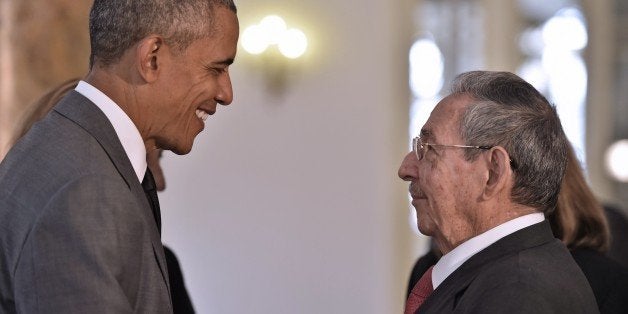
It is not too late for President Obama to reconsider his decision to shun Fidel Castro on his trip to Cuba. There are at least three good reasons for doing so.
First, the aim of the trip, according to administration statements, is to stoke the goodwill that Mr. Obama fostered by his rapprochement with Cuba in December 2014. The premise behind that policy is that engagement is a likelier vehicle of political and economic change than ostracism.
If goodwill is the goal there is no better place to start than overcoming the bad will that continues to separate Americans from the former Cuban president. By reaching out to Castro, Mr. Obama would not only reinforce the idea that grown ups resolve their differences face to face, he would show respect for -- not agreement with -- someone the vast majority of Cubans still deeply admire, despite their many criticisms.
Second, once Mr. Obama departs Cuba he will head for Argentina and a meeting with its new president, Mauricio Macri. The visit to Argentina is part of Mr. Obama's initiative to improve relations with Latin America.
Few things symbolize Latin Americans' frustration with the United States as starkly as our enduring enmity towards Castro. By reaching out to him, the President would demonstrate that he understands Latin Americans' centuries-long aspiration to be free and independent of colonial rule, whether Spanish, U.S., or Soviet. That is what Mr. Castro means to them.
One person who knows this first hand is Pope Francis. Hailing from Latin America himself, Francis took pains to meet with Mr. Castro on the Papal visit to Cuba last fall. On his own trip to the region, President Obama could do worse than aligning himself with the Great Bridge Builder.
Third, and finally, by meeting Mr. Castro, President Obama could help dispel the caricature of Castro as a ranting demagogue that endures in U.S. media and politics. There is far more to Castro than that, as I have discovered in recent work in the Cuban archives.
In July 1953, a twenty-six year old Castro led a band of militants on an a quixotic attack on a government military barracks in Santiago de Cuba to protest the suspension of constitutional liberties by dictator Fulgencio Batista.
For leading the attack, Castro was sentenced to fifteen years in jail (he would serve twenty months), but not before delivering a two-hour speech in defense of the universal right to resist tyranny during which he cited, among others, Montesquieu, Aquinas, Locke, Milton, Rousseau, the American Founders, and Thomas Paine.
In jail, Mr. Castro read an astounding selection of books, including literature, history, philosophy, psychology, political economy, and classics. He was a fast but not casual reader, reading not simply for amusement but for clues to the meaning of life and about successful revolutions.
His interest in revolutions brought him inevitably to Franklin D. Roosevelt, about whom Castro demonstrated an abiding interest. What the prisoner wanted to document, he wrote a friend, was "FDR's policy of raising agricultural prices, promoting and preserving soil fertility, providing credit, forgiving debts, developing internal and external agricultural markets, expanding jobs, reducing working hours, lifting wages, supporting the unemployed, aging, and infirm, reorganizing industry and the tax system, regulating trusts and banks, and achieving monetary reform"--in short, what Castro himself wanted to do for Cuba.
How Castro's interest in political liberty and liberal reform warped into an embrace of the Soviet Union and repression of civil and political liberties is an instructive story that Mr. Obama and his fellow Americans would do well to understand. It was not inevitable that things turned out this way, and acknowledging the lost opportunity might speed further cooperation.
It has been observed that this will be the first visit of a U.S. president to Cuba since Calvin Coolidge's trip 88 years ago. The context of that trip is instructive. Coolidge went at the invitation of Cuban president Gerardo Machado, arguably Cuba's most notorious dictator ever, whose corruption, brutality, and kowtowing to Washington inspired a revolution that was quashed by a lack of U.S. recognition in January 1934.
That history helps explain not only the rise of Fidel Castro but also why Cubans still admire him. Many Cubans lost a lot to the Revolution. Many more gained recognition and resources they never had.
One fundamental and unrequited aim of Castro and the Revolution was for the United States to grant Cuba recognition, respect, and reciprocity as a free and independent nation for the first time. This Mr. Obama has at long last done, which is why the great majority of Cuban people love both men despite their flaws.
Bringing the two together would be the clearest signal yet that things have really changed.
Jonathan M. Hansen, a historian at Harvard University, is writing a biography of the young Fidel Castro.
